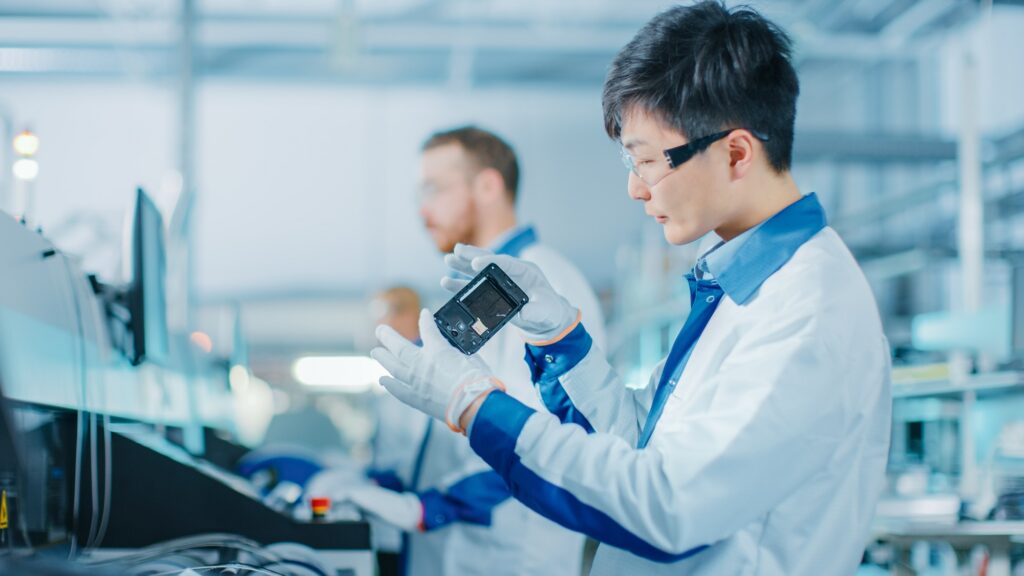Developing profitable products in today’s High Tech market is more challenging than ever. Manufacturers must move quickly to out-innovate their competitors without sacrificing product cost and quality. One way to do it is through virtual builds.
The results of our survey show that it can help save an average of $175,000 per product, 36% fewer prototypes and engineering change orders (ECOs) and an estimated 37% reduction in time to market.
To reduce cycle times, increase efficiency and deliver quality, High Tech manufacturers must digitalize short-term production planning software by adopting new techniques like the “virtual build” process to validate manufacturing earlier, in parallel with product design.
Manufacturing Engineering Challenges in High Tech

In an industry where products have short lifecycles and time to market drives market share, efficiency is everything. Although High Tech is at the forefront of technological innovation, many companies still face challenges that prevent them from achieving operational excellence, which typically revolve around:
- Non-value-added activities: On average, 25% of manufacturing engineering time is spent on activities like rekeying information, sourcing for and recreating data and modeling common assets due to heavy reliance on legacy systems that are error prone and result in data silos.
- Expensive physical prototypes: Creating physical prototypes helps engineers identify issues and opportunities for improvement, allowing them to validate manufacturing earlier in the process. However, this method cannot account for certain scenarios and conditions due to physical limitations. In addition, it is time-consuming and costly to tweak these prototypes each time an issue is found.
- Lack of information and visualization: 46% of respondents cited untimely design data and a lack of visibility to manufacturing capabilities as the largest hindrances to product success and profitability. Without access to information about the products to be manufactured, work cells, equipment, tooling and other resources needed for production, manufacturing engineers face extreme difficulty in designing and validating production processes accurately and efficiently. This leads to a higher risk of discovering issues at the prototype or production stages and incurs exponential costs as manufacturing lines, automating and tooling would have already been commissioned.
Addressing Manufacturing Problems with Virtual Builds
To address these challenges, companies need to transform the “virtual build” process related to manufacturing engineering and eliminate inefficiencies that impede innovation. Solutions like DELMIA help facilitate the “virtual build” process, providing High Tech manufacturers the ability to study new product designs and their associated assembly processes in a rich 3D virtual environment.
By leveraging such solutions powered by 3D and simulation capabilities, like virtual twins, manufacturing operations can be validated across a wide variety of manufacturing engineering processes. This leads to improved manufacturing engineering performance and overall product development profitability, resulting in these benefits:
- More time for valuable activities: Using “virtual build” processes, all relevant information is collated on the digital platform and made available to every stakeholder. This drives efficient collaboration and acts as a single source of truth, breaking down data silos and eliminating discrepancies. Thanks to such solutions, top performers are noted to spend 17% less time on non-value-added activities in manufacturing engineering, directly reducing development cycle times.
- Trading physical prototypes for digital validation: By creating a “virtual build” process with all the relevant data readily accessible on a single platform, engineers can generate a greater number of accurate, science-based simulations. This ensures issues are identified easily and can be instantly digitally rectified, before committing to a physical prototype or manufacturing equipment. Research showed that validating manufacturing processes with 3D and virtual simulation technologies resulted in fewer prototypes, faster product launches and increased revenue and sales margins.
- End-to-end visibility and visualization: By using a virtual environment as testing grounds for the production process, designers and engineers can experience the product being manufactured digitally with a 360°-view, allowing them to identify issues much earlier without the cost of deploying physical resources. In fact, top performers who apply virtual validation are 33% less likely to uncover issues in the final production stage. In addition, “virtual build” processes help predict the impact of decisions on sustainability by acquiring accurate design data.
Interested in learning how digitalizing manufacturing engineering can make a difference to your High Tech company’s success in overcoming efficiency, quality and cost challenges? Download our report on Transforming Manufacturing Engineering in the High Tech Industry now.
Learn more about Tech-Clarity.

